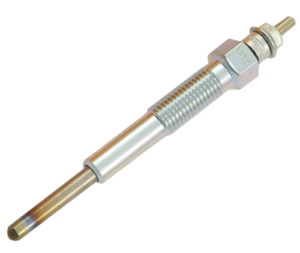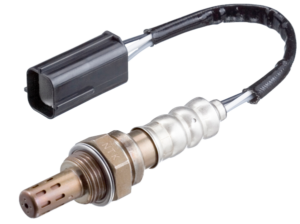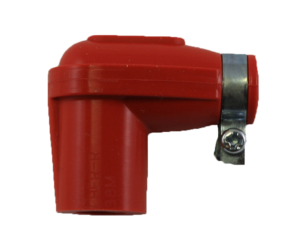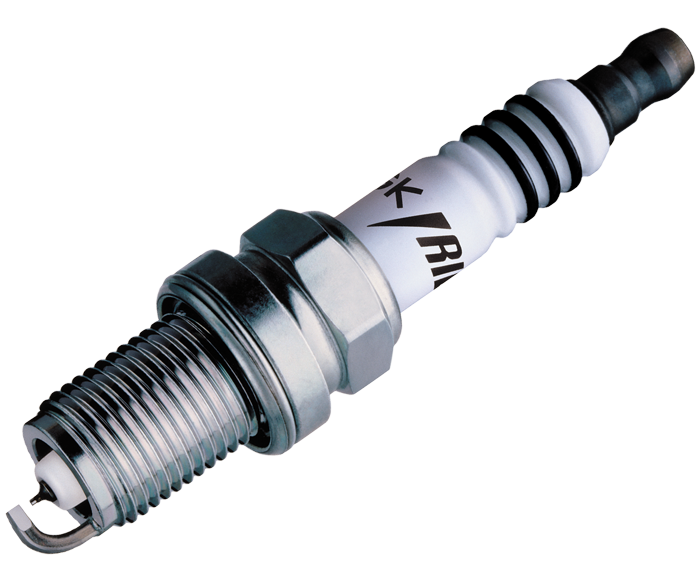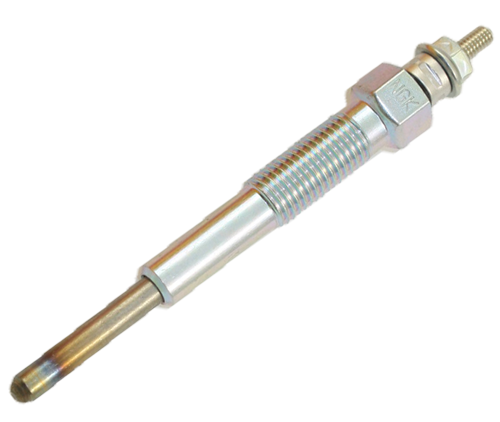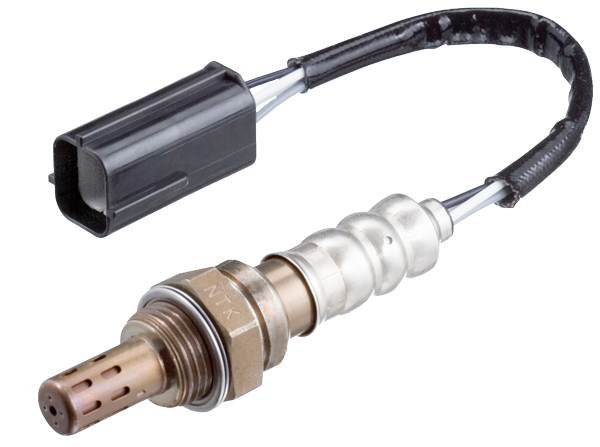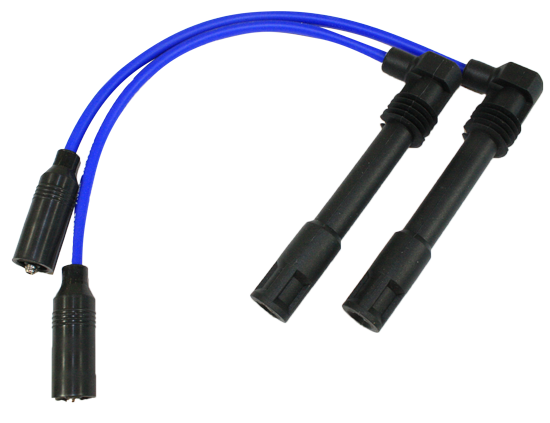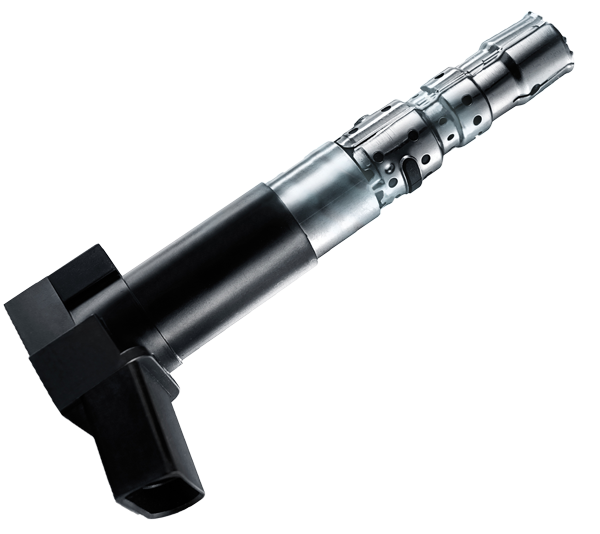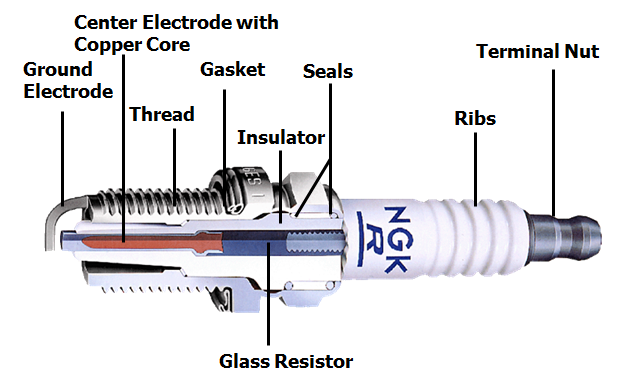
Spark Plug Analysis
Appearance of a used spark plug tells a lot about the operating conditions of the engine and the plug. Thus the analysis of a plug plays
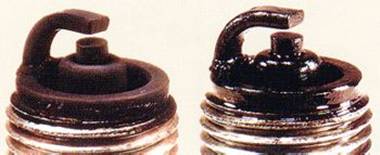
1 : Carbon Fouling
Carbon fouling is the most common spark plug related failure, but is not a spark plug fault. Carbon deposits are conductive, and as they accumulate along the
As mentioned the optimal operating temperature range for a spark plug is 450 – 870°C, 450°C is the spark plug self cleaning temperature at which point carbon deposits will burn off. However, if too cold a spark plug is used and this temperature is not achieved carbon fouling will occur. This is the most common reason for carbon fouling.
Other causes for carbon fouling include:

As carbon builds up, the insulation resistance of the spark plug drops and the voltage generated by the ignition coil is reduced. When the generated voltage becomes lower than the required voltage of a spark plug (the voltage needed to cause sparks at the spark gap), sparking is suppressed and mis-firing occurs.
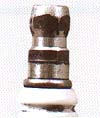
2 : Terminal Nut Wear
Excessive vibration of the engine may lead to abnormal wear of the terminal nut. As a result, the cover may come off the plug.
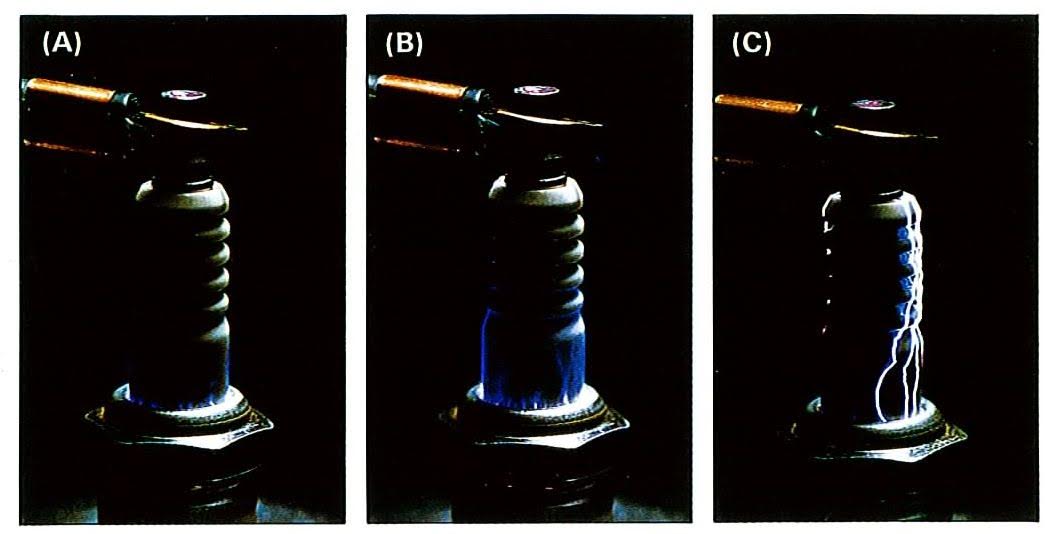
3 : Flash-Over – Spark leakage from terminal to metal shell
Flash-Over When the spark gap has widened due to wear of the electrodes, a higher voltage is required. The
As a higher voltage is required for a turbo charged engine, flash-over is more likely to occur. It is important to recognise that a plug cable is a consumable part which needs to be replaced periodically. When there is no spark after washing the car or the engine room, check whether water has entered the plug cover or not.
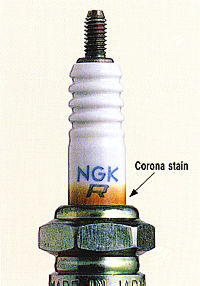
4 : Corona Stain
A removed spark plug sometimes has discolouration around the insulator surface which looks like gases have leaked between the insulator and the shell.
It is not
Mechanism of corona discharge
The high voltage applied to the spark gap is also applied to the area between the centre electrode and the metal shell, causing an insulation breakdown of the air at the gap (a) between the insulator and the metal shell. The phenomena is called a corona discharge. The generated carona discharge develops toward the terminal nut. This last process is the pale blue carona discharge that is observed at night.
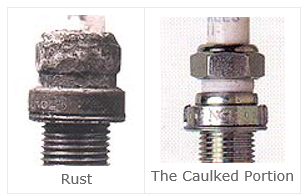
5 : Metal shell – Rust, breakage at caulked portion
When water has entered the plug hole due to water resistance of the plug cover or, in the case
The rusting of the metal shell causes no deterioration of the function of the spark plug. Note, however, t hat water inside the cover may prevent sparks from being generated.
If the plug is forced to remove when the returning torque is abnormally high due to some causes such as plug thread seizure, the plug may break at the caulked portion of the metal shell.
When returning torque is high, the engine should be first warmed up. Then, by spraying penetrating liquid around the plug thread and leaving it for a while, the plug can sometimes be removed more easily.
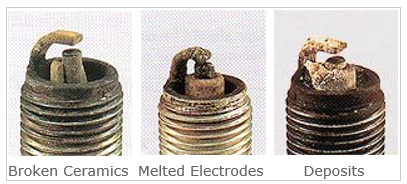
6 : Firing End – Broken ceramics, melted electrodes, deposits
When the firing end of the plug has overheated, the ceramics may break or the electrodes may melt. Under usual
When the A – F setting is lean due to a faulty fuel system, the combustion temperature may rise, resulting in abnormal combustion. The engines cooling system may be faulty. When the spark timing is too early, the combustion temperature may rise, resulting in abnormal combustion. When deposits (generating from combustion) are accumulated in the combustion chamber, the combustion temperature may rise, resulting in abnormal combustion.When the firing end of the plug has overheated, the ceramics may break or the electrodes may melt. Under usual engine condition, the plug does not overheat. Note, however, that it gets extremely hot in the case of abnormal combustion (ex. high – speed knocking, pre – ignition).
When deposits have accumulated on the firing end of the plug, deposits may overheat, causing abnormal combustion. Especially in a two – cycle engine, oil gets burned and remains in the combustion chamber as deposits, accumulating on the plug as well. It is necessary to remove these deposits periodically.
In engines that consume larger amounts of oil, oil may enter the combustion chamber. It is necessary to chec k the amount of deposits during inspection of the plug. Burning of oil can also be detected by visible white exhaust gas emitted from the tail pipe.
7 : Dry and wet fouling
Wet fouling is fundamentally similar to carbon fouling. Although the root cause may vary due to a number of reasons, in essence the insulation resistance is reduced allowing a spark to track along the insulator nose and earth to the metal shell rather than forming a spark across the electrode gap as desired. Please see 1. Carbon Fouling
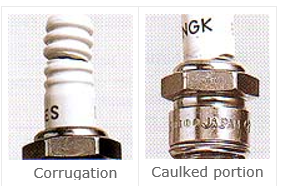
8: Insulator – Breakage at the corrugation and caulked portion
When removing or installing the plug, the plug wrench may slip or be tilted and may hit the corrugation
Slipped wrench leaves a mark on the hexagonal portion of the metal shell. A plug wrench with a definite hexagonal shape should be used. A rounded or loose wrench should be either avoided or used with special care.
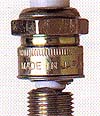
9: Under or over tightening
When the plug has not been tightened enough, the combustion gas leaks out the thread portion. This reduces the radiation of the plug, causing
When the plug is tightened too much the metal shell thread neck may be broken at around the first to second thread.
The plugs with smaller diameter portions, the D (12 mm) or C (10 mm) types thread neck portion is not very strong. Observe the recommended torque and turning angle and tighten with special care.
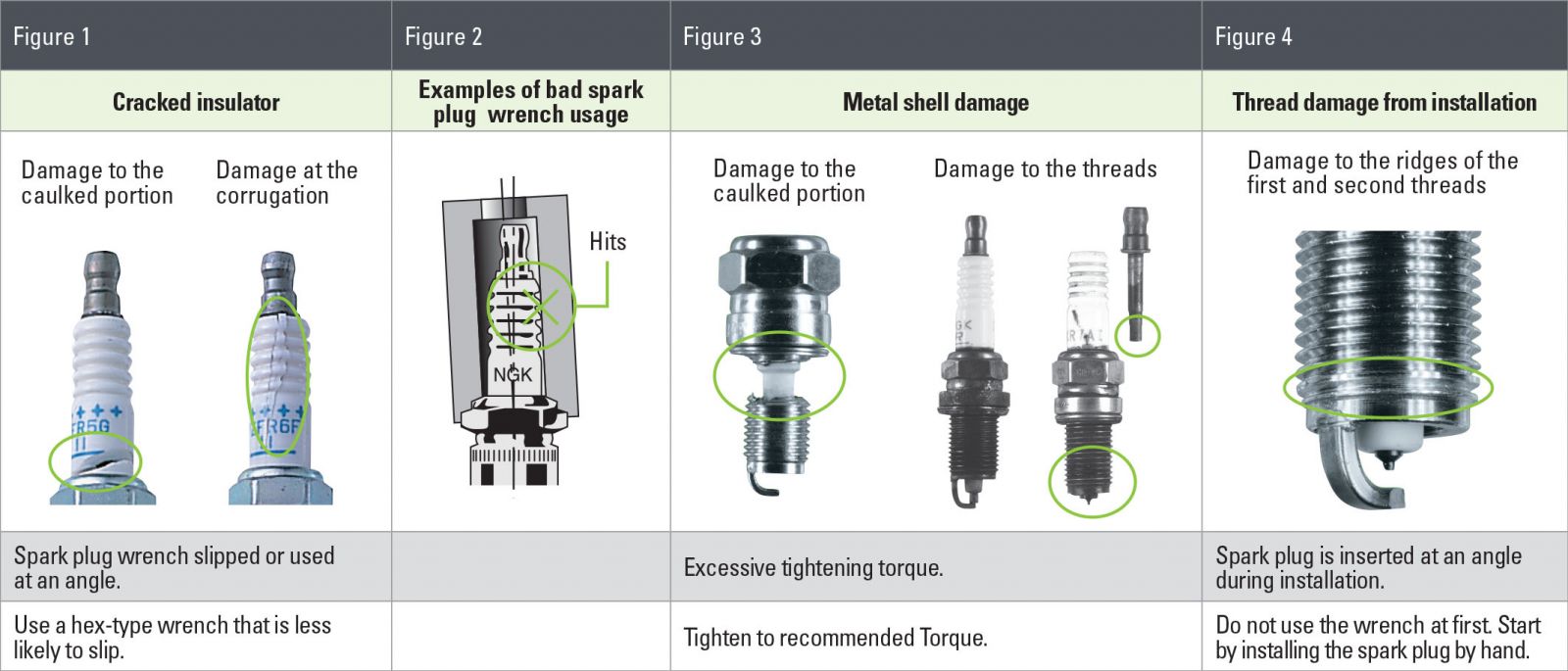
10 : Plug socket troubles
Damage to spark plugs during installation can easily occur and will oftern result in an intermittent misfire or no spark at all. Care must
To avoid plug damage the following qualities are required in a wrench (See Figure 2);
That it fits the spark plug “hex” properly. 2. The inner space must be large enough to avoid contact with the insulator. 3. The spark plug socket must completely cover the “hex” portion of the metal shell. 4. A hexagonal socket is preferable as it is less likely to slip than a twelve point star type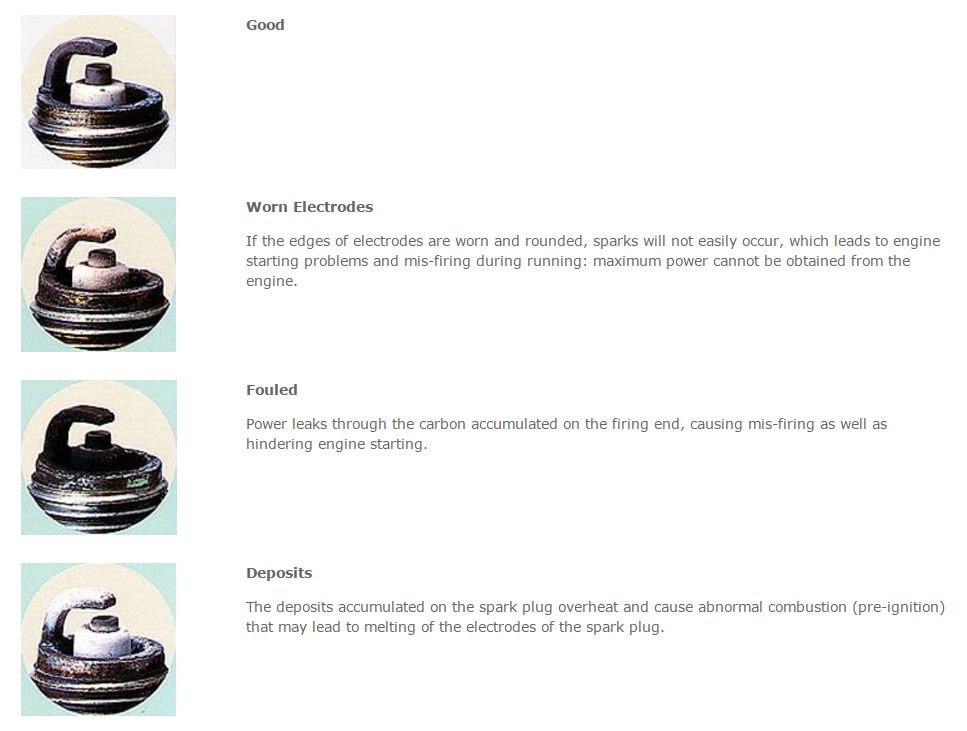
11 : Examples of problems caused by excessively over long periods of use
Deposits accumulated on the firing end may induce abnormal combustion (pre-ignition), causing problems that include melting
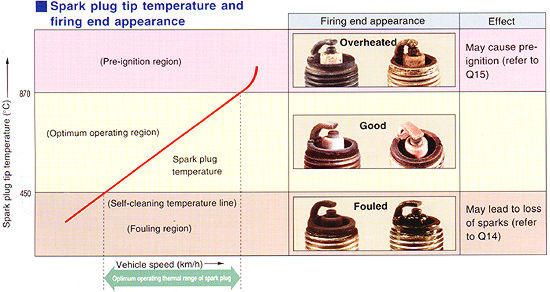
Why is the firing end appearance of a spark plug important?
Because the Firing end appearance reflects the suitability of the spark plug as well as the condition of
Self Cleaning Temperature
The boarder-line between the fouling and optimum operating regions (450 degrees Celsius) is called the spark plug self cleaning temperature. It is at this temperature that the deposits accumulated are burnt off.
What is spark plug fouling?
It is a phenomenon by which carbon attached to the firing end causes electrical leakage that leads to mis-firing.
As the high voltage generated by the ignition coil leaks away through the carbon, mis-firing may occur and cause running and starting difficulties.
What is spark plug overheating?
Prolonged overheating may induce abnormal combustion (pre-ignition), resulting in melting of the spark plug electrodes.
Overheated spark plugs have a white insulator surface at the firing end speckled deposits. Electrode melting represents excessive overheating. When the spark plug temperature exceeds 870°C, the firing end serves as a heat source before sparking and induces abnormal combustion (pre-ignition), possibly damaging the piston.
Causes of overheating and corrective actions

What is lead fouling?
Lead deposits accumulated on the spark plug firing end help electricity to leak away and result in mis-firing.
When the lead contained in gasoline as an octane enhancer, adheres as the firing end of the spark plug, the high voltage generated by the ignition leaks through the lead deposits and causes mis-firing during acceleration. This problem often takes 2,000 ~ 3,000 km (1,200 ~ 1,800 miles) to become apparent.

Insulation resistance of a spark plug vs. vehicle speed.
Lead fouling does not appear during starting or low speed running. On the other hand, mis-firing occurs when accelerating from the middle speed range since the insulation resistance of the spark plug drops quickly.

Better selection of spark plugs.
Use hotter type (Example: BP6ES – BP5ES)
Use projected insulator nose type (Example: B6ES – BP6ES)






